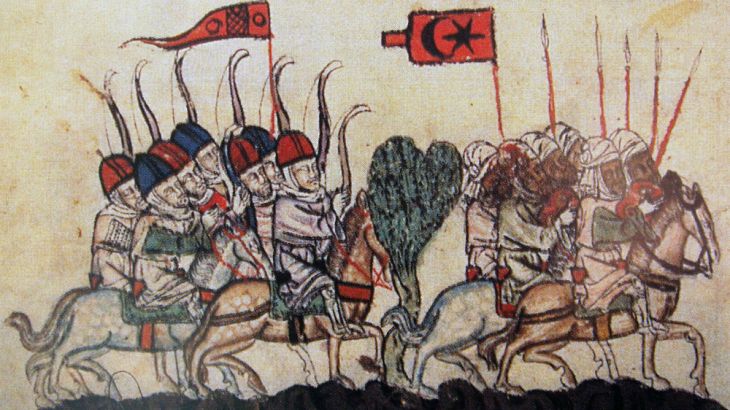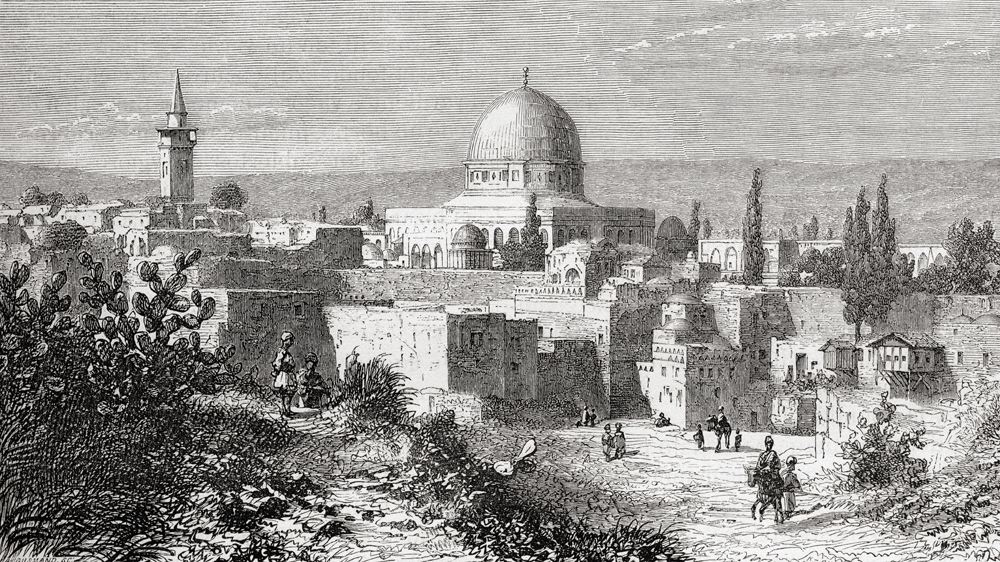
Revival: The Muslim Response to the Crusades
This part of ‘The Crusades: An Arab Perspective’ explores the birth of the Muslim revival in the face of the Crusades.
The Crusades: An Arab Perspective is a four-part documentary series telling the dramatic story of the crusades seen through Arab eyes, from the seizing of Jerusalem under Pope Urban II in 1099, to its recapture by Salah ad-Din (also known as Saladin), Richard the Lionheart’s efforts to regain the city, and the end of the holy wars in 1291. Part one looked at the First Crusade and the conquest of Jerusalem. In part two, we explore the birth of the Muslim revival in the face of the crusades.
By the early 12th century, the crusades had successfully captured not only the holy city of Jerusalem but huge swaths of the Muslim Levant. Islam’s third holiest site, the al-Aqsa Mosque, was in the hands of the crusaders.
Keep reading
list of 4 itemsSikh leaders welcome arrests in Canada activist killing, but questions loom
Photos: Ukraine marks its third Easter at war
Israeli police detain Greek consul’s guard at Orthodox Easter ceremony
”Their
was horrifying. They started with an infamous massacre. They killed people in the streets, in their houses and in alleyways. Arab sources talk about a hundred thousand people slaughtered.”]
The Muslim world, a mighty power for the previous four centuries, was shocked by the Christian annexation of large parts of their empire.
With Jerusalem under their control, the crusaders began to build a new system of rule in the lands they had captured.
They expelled many of its original inhabitants, including Muslims, Jews, and eastern Christians, and began to fill Jerusalem with settlers arriving from Western Europe.
“Those people were slaves and vassals and had no rights at all in Europe. When they came to us, their whole life changed when they became landowners. Their social status changed and so did the demographic and social class structure,” explains Afaf Sabra, professor of history, Al-Azhar University.
Furthermore, the commanders of the First Crusade, lesser knights from Europe, began to style themselves monarchs in the lands they conquered.
In July 1100, Baldwin of Boulogne, one of the leaders of the First Crusade, was crowned Baldwin I, King of Jerusalem.
“With the establishment of the Kingdom of Jerusalem, the county of Edessa and the Principality of Antioch, expansion into the Arab lands became easier. The new colonial leaders began expanding their realm very easily,” says Qassem Abdu Qassem, head of the history department, Zaqaziq University.
 |
| Islam’s third holiest site, the al-Aqsa Mosque, was in the hands of the crusaders in 1099 [Getty Images] |
Aleppo and the economics of war
Within a decade, most of the Levantine coast was in the crusaders’ hands. And the Christian enclaves in the east now numbered four, with the addition of a new county in Tripoli.
“The coastal area was for the crusaders a very, very tactically significant area, both to supply provisions and to bring pilgrims through the harbours. So securing the coastal areas was a crucial part of crusaders’ tactics,” notes Jan Vandeburie, of the School of History, at the University of Kent.
The economics of the war soon began to dominate the crusades and the Regent of Antioch, Tancred, marched his army towards Aleppo, then the trade capital of the Levant.
Aleppo’s ruler, Radwan, who has been described as spineless and servile, had a friendly relationship with the crusaders. The story goes that he even put a cross on the mosque of Aleppo, which provoked a strong reaction from the locals as they revolted against their duplicitous ruler.
|
|
The uprising was irresistible and the Muslim people forced the caliphate in Baghdad, weak though it was, to take action. Abbasid Caliph Al-Mustazhir asked for help from his protector, the Seljuk Sultan.
The governor of Mosul, Mawdoud, was ordered to gather his army and put an end to the crusader siege of Aleppo. Mawdoud was successful in forcing the crusaders to lift the siege of Aleppo because other crusader entities would not come to support them. But Aleppo’s ruler Radwan prevented Mawdoud’s army from entering the city.
“At the same time, Toghtekin [the governor of Damascus] was being attacked by the Kingdom of Jerusalem. Mawdoud’s forces came to help him resist the attack. Mawdoud met King Baldwin in a battle near Tiberias known as the battle of As-Sannabra during which the Muslims defeated the crusaders,” says Sabra.
Toghtekin welcomed Mawdoud gratefully after his victory at As-Sannabra, but later had him assassinated.
Imad Ed-Din Zengi and the Muslim revival
The new governor of Mosul, Imad Ed-Din Zengi, seized control of Aleppo in 1128. Bringing Mosul and Aleppo together “meant taking control of a major gateway to the internal regions of the Levant and towards Mesopotamia,” says Ahmad Hetait, former dean at the Faculty of Arts at Islamic University.
The Muslims' initial response had been inadequate but now it was time for a revival. The revival arose from the people, not the rulers.
In effect, cutting off trade and communication routes between Antioch and Edessa, along with that of the county of Tripoli and the Kingdom of Jerusalem, posed a major obstacle to the crusaders as they confronted the Islamic world.
“The crusaders had relied on dividing the Muslim fiefdoms to deal with them separately, thanks to their insular rulers. Now a unified front was born,” says Muhammad Moenes Awad, professor of history at Sharjah University.
With Damascus protected by a truce with the Kingdom of Jerusalem, Imad Ed-Din Zengi began to prepare for what would be his greatest military achievement: On December 25, 1144, his army attacked and captured the County of Edessa in a matter of hours. It had been the first crusader state in the region but was now the first city to be retrieved by Muslims.
“This is seen as a breakthrough, the real start, the revival of the ‘jihad’ in the Muslim Near East. It’s the first big defeat for the crusaders and it shows that they can actually be defeated and that the Muslim revival can begin to gather some pace,” says Jonathan Phillips, professor of history at Royal Holloway, University of London.
Imad Ed-Din Zengi’s victory in Edessa was a turning point; it lifted the Muslims’ morale and enthusiasm for the fight. Two years later, however, Imad Ed-Din Zengi was killed by his own slave. He was succeeded by his son, Nour Ed-Din.
The Second Crusade
 |
| In 1147, Pope Eugene held a religious council which led to the Second Crusade [Getty Images] |
The loss of Edessa was not taken lightly in Europe. In 1147, Pope Eugene held a religious council calling for the Second Crusade, to be led by two European kings, Louis VII of France and Conrad III of Germany.
In the summer of 1147, the armies set off towards the Holy Land and after almost a year, the German and French forces finally arrived in Jerusalem.
Soon after, they decided to launch an attack on Damascus, which ended in disaster.
“They retreated, there wasn’t a great battle. They weren’t defeated in some epic struggle, they just slunk away. And that’s a real blow to the morale of the crusaders in the west,” says Phillips.
The tragic failure of the Second Crusade was by no means the last disaster to befall the Christians. Six years later, Nour Ed-Din finally managed to annex Damascus, the very city they had failed to capture.
Qassem Abu Qassem describes Nour Ed-Din Zengi as a leader who “had devoted his whole life to the principle of jihad”, and says that by uniting Muslims under one banner, he enabled them to recover occupied land and Jerusalem.
“It was here that an Islamic revival was born. It had begun before but at this time it became more organised, less random,” concludes Afaf Sabra.